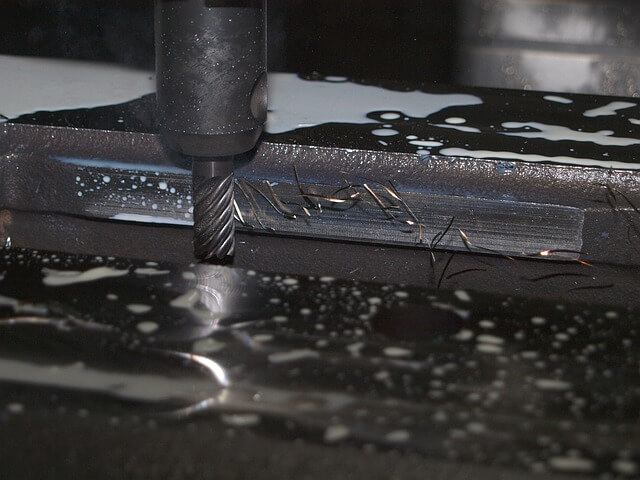With the CNC machining market witnessing remarkable growth, soaring from $86.83 billion in 2022 to a projected $140.78 billion by 2029, it’s evident that this manufacturing process has become a driving force in various industries around the world.
It’s not surprising to see that CNC machining is growing at such an amazing rate. Its ability to produce precise and complex components has made it a go-to solution for manufacturers seeking high-quality parts. However, as demand continues to rise, the need for improving CNC machining efficiency also becomes increasingly important.
Maximizing efficiency not only helps meet growing demand but also enhances productivity and reduces costs. So, in this post, we will be showing you some ways you can significantly boost CNC machining efficiency. Just keep reading!
Tips for Improving CNC Machining Efficiency
#1: Work with a reputable CNC machining company
The foundation of successful CNC machining lies in selecting the right partner. A reputable CNC machining company can make a significant difference in the outcome of your projects. When choosing a CNC machining partner, make sure you carefully consider their experience and expertise in the industry.
A well-established company will have a team of skilled professionals who can handle all types of CNC machining parts and can provide valuable insights for your projects. Apart from that, you will also want to evaluate the company’s equipment and technological capabilities.
State-of-the-art machinery and tools can make a huge difference in the quality and speed of CNC machining operations. Read through customer reviews and testimonials to have a clear idea of how satisfied their previous clients are. This can help you decide whether or not to go with them too.
#2: Optimize Design for Manufacturability (DFM)
Design for manufacturability (DFM) is a concept that emphasizes collaboration between designers and machinists. Try to involve CNC machinists early in the design process, so potential manufacturing issues can be identified and addressed in the initial stages.
This approach is a great way to streamline the manufacturing process and minimize the risk of costly design revisions later on. It can help improve CNC machining efficiency and accelerate production.
#3: Implement efficient tooling and work-holding strategies
Tools and work-holding devices are vital components of CNC machining. Selecting the right tools and utilizing high-performance tooling with appropriate coatings can significantly enhance machining efficiency. Efficient tooling reduces cutting forces, extends tool life, and improves the overall machining process.
Similarly, work-holding solutions play a crucial role in securing workpieces during machining. They minimize vibration and movement, ensuring accurate and consistent results. Regular monitoring and maintenance of tools and work-holding devices help prevent unexpected downtime and maintain machining efficiency.
#4: Embrace CNC programming best practices
The CNC programming process is another thing that has a direct impact on machining efficiency. Well-optimized CNC programs can streamline operations and reduce cycle times. One major way to achieve this is when CNC programmers are proficient in utilizing computer-aided manufacturing (CAM) software. CAM software allows for the creation and simulation of CNC programs, optimizing toolpaths and minimizing unnecessary movements.
This further has an influence on efficiency by reducing tool travel distances and improving cutting efficiency. However, before running programs on the actual machine, try to first perform simulations and verifications. That will help you identify potential issues and prevent costly errors during production.
#5: Minimize downtime and optimize workflow
Downtime is the enemy of productivity in CNC machining. Identifying and addressing common causes of downtime can significantly improve efficiency. So, take out time for regular maintenance and calibration of CNC machines. This will ensure they are in optimal working condition, reducing the risk of breakdowns and unexpected downtime.
Batch machining and automation can also help optimize production as they allow for the simultaneous processing of multiple workpieces, minimizing idle time.
#6: Embrace advanced monitoring and data analytics
As technology continues to advance, the integration of advanced monitoring systems and data analytics has become increasingly crucial to improving CNC machining efficiency. Real-time monitoring of machining processes provides valuable insights into machine performance, tool wear, and potential issues.
So, leverage data analytics to identify areas for improvement and implement data-driven strategies to enhance productivity. For example, data analytics can help identify the most efficient tooling and cutting parameters for specific materials, resulting in faster cycle times and improved machining accuracy.
Final Thoughts
Efficiency is the cornerstone of successful CNC machining. We have mentioned some important steps in this post that we think can boost efficiency with CNC machining. Take advantage of these six steps and you will be unlocking the full potential of CNC machining. You will be able to meet customer demands effectively and achieve long-term success in the dynamic manufacturing landscape.
















